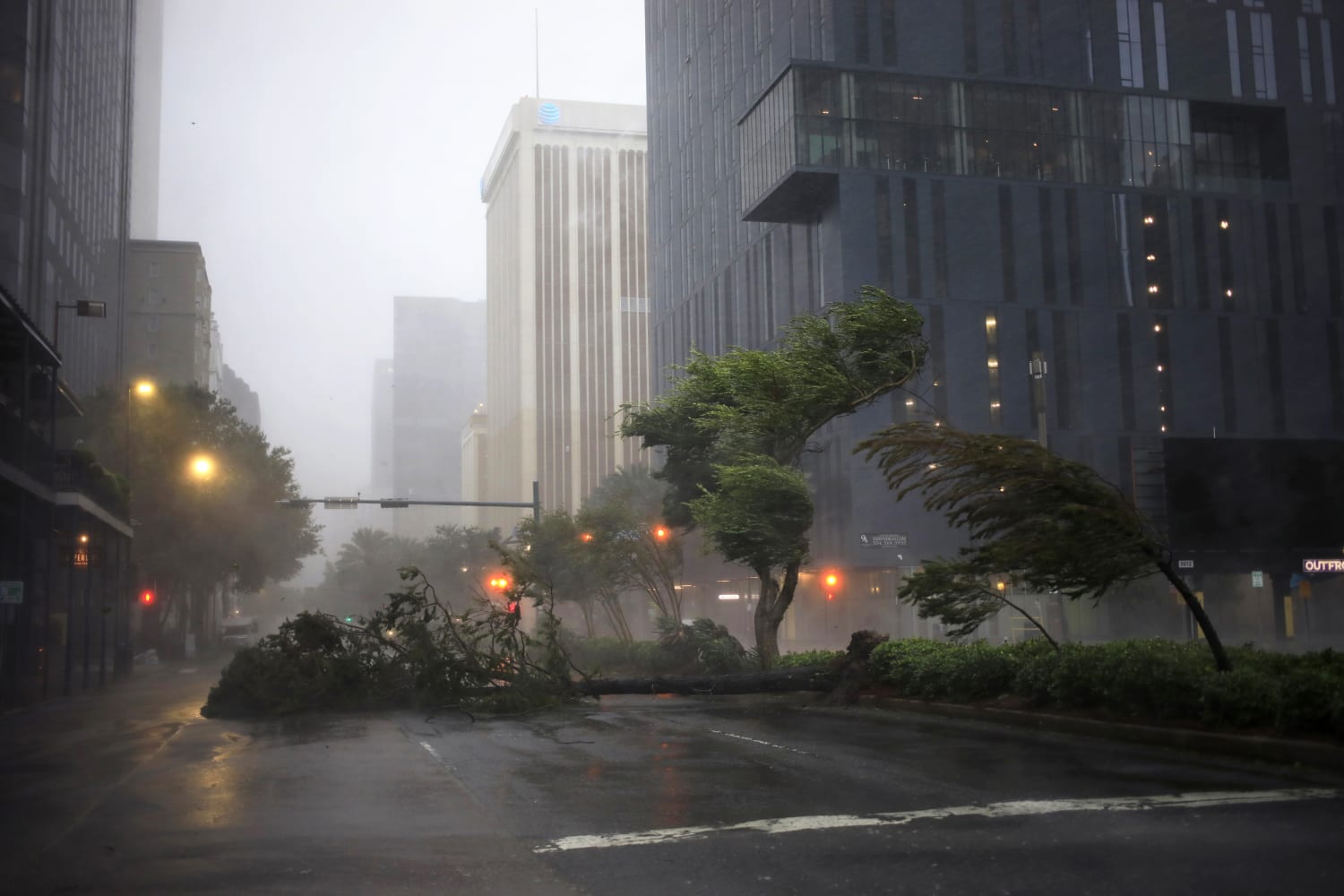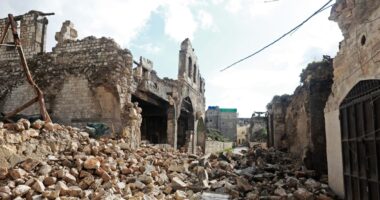Officials warned of “life-threatening” floods early Monday after Hurricane Ida crashed into Louisiana and knocked out power to more than 1 million homes and businesses, including all of the city of New Orleans.
At least one person, a 60-year-old man, died in Ascension Parish after a tree fell on his home.
The National Hurricane Center warned of a dangerous storm surges and flash floods for areas near and around New Orleans after Ida made landfall as one of the strongest storms in U.S. history. It also said tornadoes were possible from southeast Louisiana to the western Florida Panhandle.
Over 200 people were in “imminent danger” in the town of Jean Lafitte and the unincorporated community of Lafitte, in Jefferson Parish, after a levee failed, the National Weather Service office in New Orleans said late Sunday, citing local law enforcement.
“Move to higher ground now!” the weather service said. “This is an extremely dangerous and life-threatening situation.”
Electric utilities reported that slightly more than 1 million homes and businesses were without power. Entergy New Orleans, the main power utility in New Orleans, with nearly 200,000 customers, said the entire city lost electricity early Sunday evening because of “catastrophic damage” to its transmission system. It said power wouldn’t be restored Sunday night.
The latest on Hurricane Ida:
- Hurricane Ida made landfall Sunday, the 16th anniversary of Hurricane Katrina, as a Category 4 storm near Port Fourchon, Louisiana. Gov. John Bel Edwards described it as “one of the strongest storms to make landfall here in modern times.”
- The National Hurricane Center warned of “dangerous” storm surges. Authorities said a 60-year-old man was found dead after a tree fell on his home.
- Just over 1 million homes and businesses were without power across the state, including all of Orleans Parish.
- Find more up-to-the-minute updates at our live blog.
Ida remained powerful more than half-a-day after landfall. At 2 a.m. ET, the storm had winds of around 75 mph. It was expected to weaken to a tropical storm later Monday morning, and to turn to the northeast and make its way across the Middle Tennessee and Upper Ohio Valleys in the coming days.
New Orleans city’s sewer and water board said the power loss could affect a “very significant” number of its 84 sewer pumping stations. The board said that it had obtained backup generators for some but that “in order to prevent sewage backups, we have asked residents to limit water usage at home, thus decreasing the amount of wastewater we must remove.”
Louisiana Gov. John Bel Edwards told residents who didn’t evacuate to keep loose mattresses within reach — in case powerful gusts ripped off home’s roofs, which he said in a news conference was likely because “this is one of the strongest storms to make landfall here in modern times.”
Heavy rain was expected throughout the day, with totals of up to 24 inches possible in parts of southeast Louisiana and Mississippi.
Download the NBC News app for breaking news and politics
Ida made landfall over Port Fourchon, Louisiana, at about 11:55 a.m. CT (12:55 a.m. ET) as the storm moved into the mouth of the Mississippi River, the National Hurricane Center said.
At landfall, the storm’s winds were just short of 157 mph, the level considered a Category 5 hurricane on the Saffir-Simpson hurricane wind scale, which rates storms from 1 to 5 based on maximum sustained wind speed. Only four storms have made landfall in the continental U.S. as Category 5 hurricanes in the last century: the Labor Day Hurricane in 1935, Camille in 1969, Andrew in 1992 and Michael in 2018.
President Joe Biden approved Louisiana’s disaster declaration on Sunday night, freeing federal aid for people and governments in the affected areas.
“This is going to be devastating — a devastating, a life-threatening storm,” Biden told reporters after he was briefed by officials of the Federal Emergency Management Agency. “So please, all you folks in Mississippi and in Louisiana … take precautions, listen, take it seriously.”
The hurricane’s high winds ripped off roofs from buildings in New Orleans and the city’s mayor warned that “conditions are still severe” in the city.
“We need you all to remain sheltering in place throughout the evening. It’s vitally important,” said Mayor LaToya Cantrell in a video posted to social media late Sunday night.
“This is the time to continue to remain in your safe places. Not a time to venture out throughout our city at all. It’s unsafe.”
New Orleans Police Chief Shaun Ferguson said that the city would implement its anti-looting deployment. After Hurricane Katrina hit the city in 2005, looters broke into stores, taking jewelry, clothing and more.
Source: | This article originally belongs to Nbcnews.com











